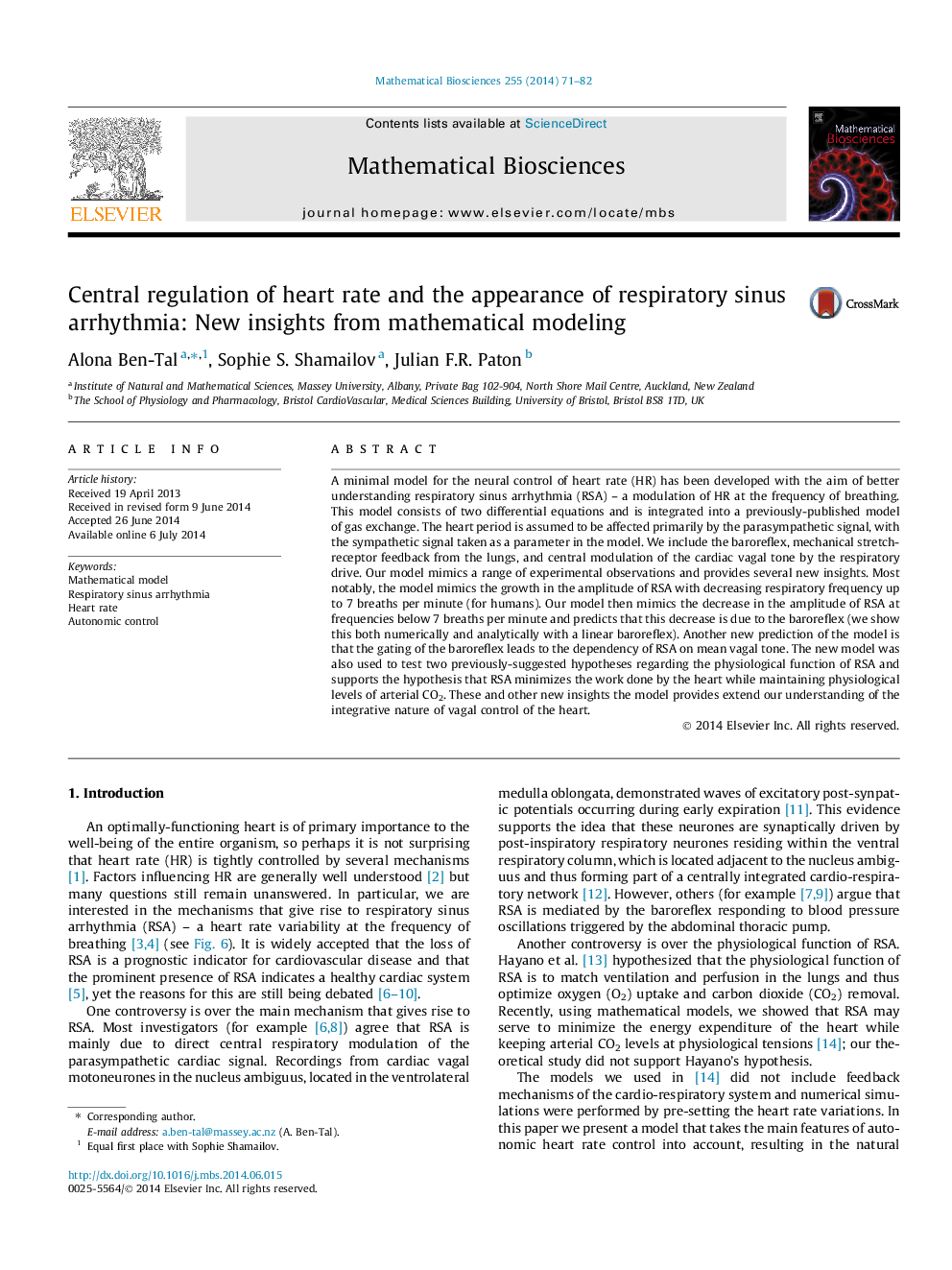| کد مقاله | کد نشریه | سال انتشار | مقاله انگلیسی | نسخه تمام متن |
|---|---|---|---|---|
| 4500062 | 1624025 | 2014 | 12 صفحه PDF | دانلود رایگان |
• A minimal model for the neural control of heart rate (HR) has been developed.
• The model was used to study respiratory sinus arrhythmia (RSA) – a modulation of HR at the frequency of breathing.
• The model mimics a range of experimental observations and provides several new testable predictions.
A minimal model for the neural control of heart rate (HR) has been developed with the aim of better understanding respiratory sinus arrhythmia (RSA) – a modulation of HR at the frequency of breathing. This model consists of two differential equations and is integrated into a previously-published model of gas exchange. The heart period is assumed to be affected primarily by the parasympathetic signal, with the sympathetic signal taken as a parameter in the model. We include the baroreflex, mechanical stretch-receptor feedback from the lungs, and central modulation of the cardiac vagal tone by the respiratory drive. Our model mimics a range of experimental observations and provides several new insights. Most notably, the model mimics the growth in the amplitude of RSA with decreasing respiratory frequency up to 7 breaths per minute (for humans). Our model then mimics the decrease in the amplitude of RSA at frequencies below 7 breaths per minute and predicts that this decrease is due to the baroreflex (we show this both numerically and analytically with a linear baroreflex). Another new prediction of the model is that the gating of the baroreflex leads to the dependency of RSA on mean vagal tone. The new model was also used to test two previously-suggested hypotheses regarding the physiological function of RSA and supports the hypothesis that RSA minimizes the work done by the heart while maintaining physiological levels of arterial CO2. These and other new insights the model provides extend our understanding of the integrative nature of vagal control of the heart.
Journal: Mathematical Biosciences - Volume 255, September 2014, Pages 71–82
